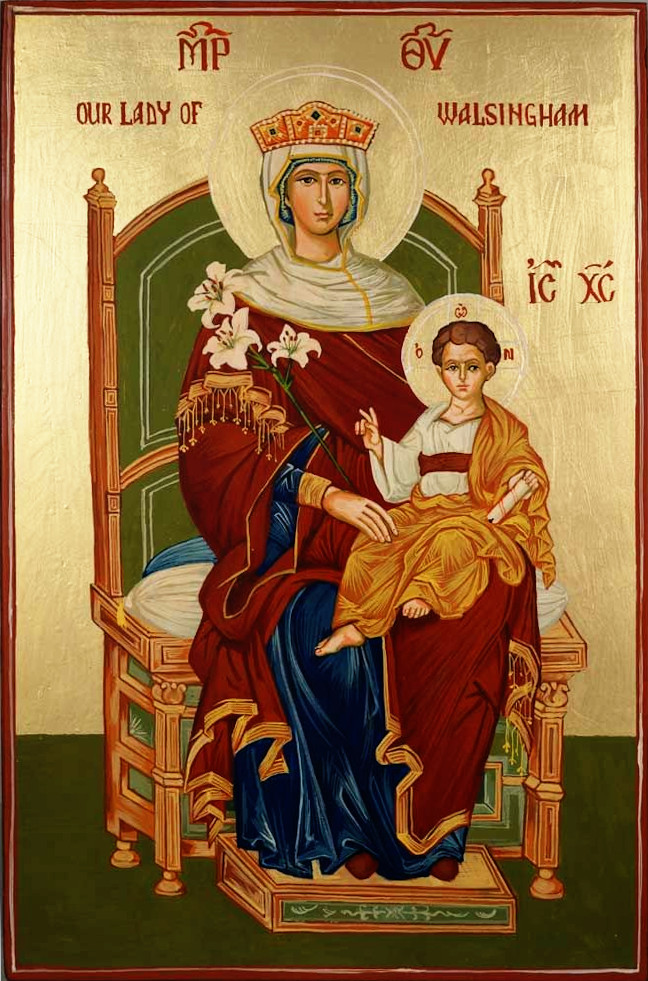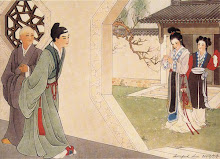I am an amnesiac. I am an American. The two go together, and not altogether on account of the alliteration. And it would go together with being a son of Adam, for that matter – poor bloke got tricked into eating a fruit and forgot what good and evil were. My amnesia gives me a double mind; it is not the cause of my guilt, but I am guilty of it anyway. Věra Danzer Cooper – the Jewish grandmother I never knew, and never knew I had until high school – has been something of a haunting presence in my life: more so than I would have thought possible at the time. The sweet and smiling face in the yellowed photographs, almost the double of my younger sister’s, somehow ‘clicked’ something in my mind. Separated as we were by generations (but not by gæography, she also a Wisconsin girl planted in Rhode Island!), she made certain abstractions concrete. She sparked in me a fascination with genealogy, which in turn led me to discover certain rhymes and patterns in my own family life. Blood is thicker than water. Water evaporates. Blood leaves marks and scars. Both flowed from the side of Christ, pierced by a Roman spear at the behest of my kin. Tertullian talked about the ‘blood of the saints’ as the ‘seed of the Church’. There’s a truth in that, but we’ll get to it later.
Blood links me indelibly to Wisconsin and to Rhode Island – both of them my childhood homes; both of them my Jewish forebears’ homes. The blood of my working-class Moravian-born immigrant great-grandfather was spilt, probably in France, in order to seal that link forever. ‘דאָרטען, װאוּ מיר לעבען, דארט איז אונזער לאנד. Dorten, vau mir lebn, dart iz aunzer land.’ Alfréd Danzer may not have been an ideological Bundist, but he lived and suffered like one. How strange it is, then, that I should be a migratory bird, a weird and hopelessly-fragmented kind of pilgrim, an assimilated-apostate Jew wandering in search of Christ on the wrong end of another continent!
So there I was in Qazaqstan: a nervous wreck and a broken failure on the verge of washing out of Peace Corps. I went to the hram of Saint Aleksandr Nevsky looking for… I don’t even know what it was anymore. Father Valery (Shurkin), the rector of that parish where Saint Aleksandr was the patron, welcomed me as warmly as if I were another Russian. And he asked me if I was Orthodox; I replied in my broken survival Russian that, no, I belonged to a ‘peace church’. He replied to me, gently, in paraphrase – though I didn’t and couldn’t have known it at the time – the wisdom of Saint John of Shanghai and San Francisco:
The closer we approach God, the closer we approach each other, just as the closer rays of light are to each other, the closer they are to the Sun. In the coming Kingdom of God there will be unity, mutual love and concord.
That the Kingdom of God is only as ‘close’ as we are to each other, and functions as a kind of inverse-square law bringing people closer as they draw near the source of that radiance, made a kind of intuitive sense to me. It also, I realise in hindsight, authorises a spiritual directive to ‘be where you are’: the light reaches everywhere; you do not have to, and should not, pack up and leave to find it. ‘Dorten, vau mir lebn, dart iz aunzer land.’ (The irony is that I had to travel to Qazaqstan and China to figure that out.) Saint John was a Russian-speaking ethnic Serb from Khar’kov; not a Yiddish-speaking Jew from Kiev. And yet even that propinquity is not an accident; as God sees it, nothing can be. If Jewish Bundism was a political reaction to a bloody kind of settler-colonial imperialist impulse on the part of our own people, then here is the spiritual mirror of that belonging. Orthodox Christianity, too, is a church of empire that doesn’t have to be.
To be a church of empire or a church of the crucified: that was the choice that the princely Saint Aleksandr, the patron of that little hram in Saimasai, had to make. He had cultivated the habits of ‘here-hood’ in his early life by attending closely to local administration in Novgorod and Vladimir, and settling disputes between merchants and craftsmen and boyars. He is most famous, though, for his military victories: winning Davidic battles against the Teutonic Goliaths on his Western frontier – the Swedes at Neva; the Germans and Balts at Peipus. Saint Aleksandr’s military prowess is commemorated in the legendary Sergei Eisenstein film bearing his name, but this is not the most important aspect of his life or character.
When it came to a true choice between worldly glory and Christ-like humility, he opted for the latter, the way of nonviolent resistance and self-abasement over the way of triumphalism. He has never been wholly forgiven for it since (and particularly not by Western-looking Slavs nor by cold-war liberals). The louder the schismatics cry out in false umbrage that he is a proto-Stalinist, the more intensely his example of sublime meekness in the spirit of Saints Boris and Gleb puts the lie to their canards and calumnies. Saint Aleksandr made a prudential decision to surrender his independence to the Khan of the Golden Horde. He gave over vain promises of imperial glory and even his state’s independence from the Tatars, in order to save the lives of his people and the spiritual character of his country. He had to put aside any illusions or delusions of grandeur he might have entertained, and make a decision here and now. He decided in that moment that ‘dorten, vau mir lebn, dart iz aunzer land’, and not some other. He didn’t have to travel to France and fight to seal the link to his home in blood. He did it merely by refusing to run, by refusing to fight, by bowing his head and bearing the Cross where he stood. To that heartsick ‘peace-church’ stranger standing in his temple, somehow he drew close: a ray of light pointing toward the Son.
At the time, the importance of my visit to the hram of Saint Aleksandr had not made itself particularly strongly felt. It was only with a certain distance of time that the full effects of that ‘fragment’ came. But the saint was ‘here’.
In the sense I’m using it, all saints are ‘here’, insofar as they are in Christ. As Saint John says, all those who have drawn close enough to God to be so glorified have, by so doing, drawn close to those here on earth as well. Grace knows no worldly borders. Rather, Christ and His saints draw near to those of us who are in need of grace. Christ’s blood is indeed a seal upon us, linking us indelibly to the Heavenly Kingdom in the Eucharist, no matter where we are. ‘Dorten, vau Dir lebn, dart iz aunzer land.’ The Crucifixion and Resurrection are historically- and gæographically-particular events that themselves shatter the logic of history and gæography. It is only we, limited as we are, who are in need of particularity and mediation. In that sense the blood of the saints truly is a seed. It falls to us to cultivate it.
I am tied to my homeland – the Upper Midwest, broadly – in a way which is completely belied by my peregrinating youth and young-adulthood. Bundism is in my Jewish-American heritage even if my amnesiac double-mindedness ‘forgets’ it, strives and rebels against it; though it belongs to a non-Christian tradition it nonetheless informs my Orthodoxy. And there, in that space where the local and the universal dissolve, there are some voices and some faces that figure with greater prominence. The humble Saint Aleksandr of that Qazaqstani temple is one. The others may be familiar to readers of this blog. Some, like Saint John of Riga, drew near to me in my wanderings abroad. Others, like Saint Alexis of Wilkes-Barre, were waiting for me at journey’s end. The examples of these saints, already remembered eternally by God, can help me – an ignorant slave, like Meno’s – to remember what I have forgotten.
















No comments:
Post a Comment